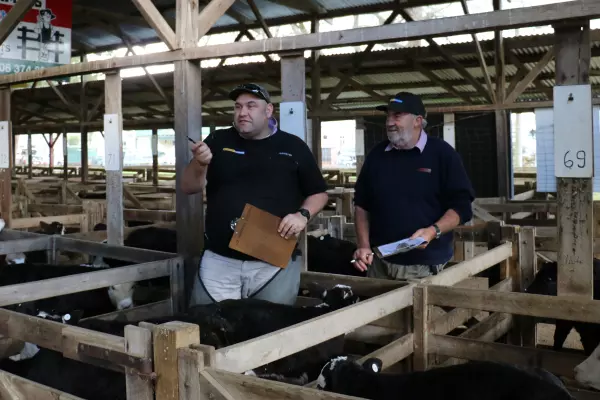People are living longer in New Zealand, so annuities should sell themselves. But few people know about them.
With an annuity, you make a lump-sum payment and, in return, get a regular income in retirement for life. Annuities help supplement NZ Super, so retirees know they'll be getting a reliable set payment.
In 2015, the Retirement Income Group, founded by NZ financial services veteran, Ralph Stewart, saw a gap in the market and set up a product that offered a more flexible take on the annuity problem.
Sold as Lifetime Retirement Income, the so-called ‘variable annuity’ fixed some of the shortfalls of traditional annuities with the undoubted appeal of a guaranteed income for life.
Members could select a target level of guaranteed income for life (backed by an insurance company set up by the group) and dial up or down exposure to market risks.
Crucially, Lifetime investors were also able to draw down funds as needed while any residual assets were passed on to members’ estates rather than staying in the annuity pool.
Beating the risk of living longer
Despite being complex in design and demanding higher fees than a standard managed fund as an annual premium, Stewart figured the gathering wave of retirees with ever-larger KiwiSaver balances would welcome a product that addressed the deep-seated fear of running out of money before death – known as ‘longevity risk’ in the actuarial trade.
Indeed, in the same year that the Stewart-led fund went live, the Retirement Income Interest Group – a subset of the NZ Society of Actuaries not to be confused with the Lifetime parent company – laid out the issues in a special report.
“Uncertainty and change continue throughout retirement: people are likely to live longer than they expect, investment and inflation risks continue, and additional costs may arise, especially because of health or long-term care needs,” the paper says.
The actuaries also provided some backing for the Lifetime KiwiSaver thesis, noting that over a million New Zealanders would hit the retirement age of 65 over the 20 years following 2015.
“We estimate about half of the KiwiSaver members reaching age 65 in twenty-five years' time will have a KiwiSaver balance of $100,000 or more in real terms,” the report says.
KiwiSaver, however, was designed primarily as an asset-gathering system with little thought, and no rules, concerning the post-retirement spending phase, or ‘decumulation’ in actuary-speak.
With no one else pitching a guaranteed income story to the KiwiSaver decumulators, Lifetime occupied a unique market niche.
However, annuities, even flexible ones, were still a hard sell.
By late 2020, when a combination of near-zero interest rates and tough capital top-up requirements from the Reserve Bank of NZ ended the income guarantee, Lifetime reported about $140 million under management.
Entering a legacy: a new old super market
Persistent low-interest rates made it hard for the Lifetime insurance arm to offset long-term liabilities without taking on more risk, which in turn triggered Reserve Bank – ultimately, untenable – demands for the firm inject a significant amount of new capital to continue operations.
Against some tough odds, Lifetime survived the near-death experience of dropping its key guaranteed income-for-life point of difference.
Following a radical overhaul, the Lifetime product resurfaced early in 2021 as a more vanilla-flavoured managed fund with an income drawdown facility tailored to client specifications: also known as an ‘allocated pension’.
Stewart said at the time that most of the existing Lifetime client base shifted across to the newly allocated pension version.
Minus the guaranteed income feature, though, the Lifetime business growth plan also needed a change of tack, which culminated in a surprise acquisitive foray into a quiet backwater of the NZ retirement savings market.
Shopping spree
Lifetime began the shopping spree with a $3.2m buyout of the Aon employer superannuation master trust from short-term owner Fisher Funds in July 2022, followed by the purchase of a ‘legacy’ AMP retail superannuation scheme this month.
Both the Aon and AMP Superannuation Master Trust schemes, now (or almost) in Lifetime control held, close to $200m apiece, with underlying membership of about 2,200 and 3,400, respectively.
Regardless of some superficial similarities – such as the ‘superannuation master trust’ branding – Stewart said it might prove difficult to formally amalgamate the Aon and AMP schemes.
The Aon scheme services an underlying network of 40 employer groups, while the AMP super product was sold to individuals via financial advisers.
At the very least, though, the entire Lifetime suite will eventually feed into the same underlying pool of, largely passive investment managers.
Lifetime has roughly $660m under management, according to Stewart, including the new purchases and associated UK pension transfer business.
AMP, Aon members to get fee cuts
He said the AMP and Aon scheme members would see fee reductions after transitioning to Lifetime.
Other ‘legacy’ retail super schemes might also be cut loose by current owners. They are the remnants of the expensive, sometimes insurance-linked products, that roamed NZ in the pre-KiwiSaver era.
AMP and Fisher manage most of the old-school super relics with perhaps $1 billion to $2b up for grabs.
“Legacy super schemes do need to modernise,” Stewart says. “Either existing providers will either tidy them up or pass the job on to new owners.”
Meanwhile, Lifetime has accrued an ageing member base smack-bang in the retirement income target zone.
And KiwiSaver will deliver “a cluster of helpful, if modest, balances for most and some high balances” over the coming years, according to a 2022 paper by the NZ actuarial retirement income specialists.
The report says on average about a quarter of contributing KiwiSaver members will retire with more than $200,000 in their pockets and decumulation on their minds.














